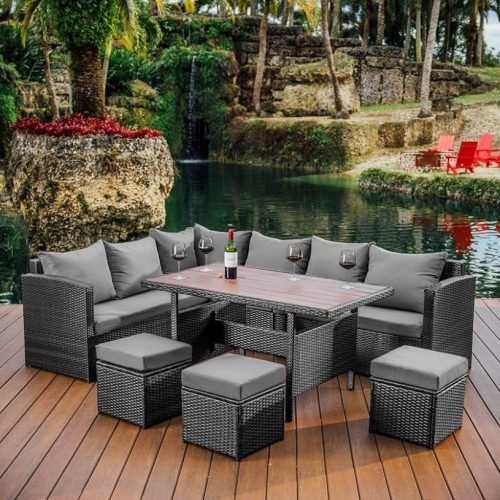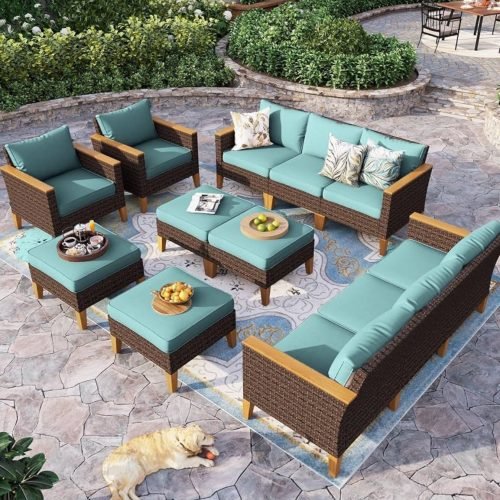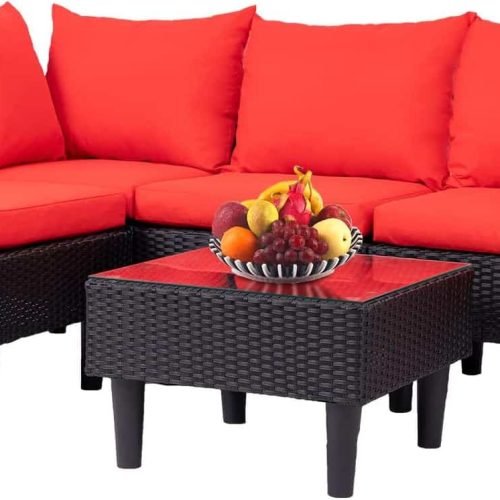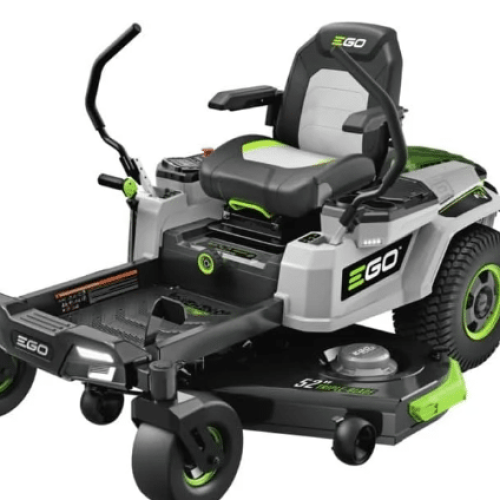Hey guys its JV Charles. Did you know starting a no-till herb garden can cut your fresh herb costs by up to 80%? You can turn your kitchen window, balcony, or patio into a lush spot for organic herbs. These herbs will make your cooking taste better. Its uped my cooking game 10 fold!
Growing no-till herb gardens in small areas like indoor gardening, windowsill gardening, and balcony gardening is great for urban gardeners and container gardeners. It lets you enjoy culinary herbs easily without the work of traditional gardening. With the right small-space gardening methods, you can have a beautiful herb garden. This garden will give you fresh, low-maintenance herbs anytime. How about them apples!
Key Takeaways
- No-till herb gardens are easy to grow in small spaces like windows, balconies, and patios
- Growing your own herbs can save you up to 80% compared to buying them at the store
- Herbs thrive in fast-draining soil and pots with proper drainage
- Choose a sunny spot with at least 6 hours of direct sunlight per day
- Water your herbs when the soil is dry, and fertilize monthly
What Herbs to Grow for Your Kitchen Garden
Choosing the right herbs for your kitchen garden is fun and important. It’s all about picking culinary herbs you’ll use in your cooking. There’s no need to grow herbs you won’t use often.
Grow Herbs You’ll Actually Use
Think about the herb varieties you like for cooking. Do you love French herbs like bay, parsley, tarragon, and thyme? Or do you prefer the bold tastes of Mediterranean herbs such as oregano, rosemary, and basil? Maybe you’re into unusual herbs like lemon verbena or Vietnamese coriander. Pick herbs that fit your cooking style and make you excited to cook. Who thought cooking could be this cool? I never did.
Try New Herb Varieties
After picking your favorite culinary herbs, try new and unique ones. You could grow ‘Purple Petra’ basil or ‘Lemon Variegated’ thyme. This way, you can add new flavors to your cooking and keep your garden super cool..
The best part of growing your own herbs is making your kitchen garden fit your needs. Focus on the culinary herbs you use often. This will help you have a successful and enjoyable herb garden. One you will wonder how you lived without.
Starting Your Herbs from Seeds or Plants
Starting an herb garden can be done from seeds or pre-grown plants. Each method has its benefits, depending on what you prefer and your gardening skills.
If you can’t find the herb plants you want, don’t worry. Most herbs are easy to grow from seeds. Experts recommend starting with double the amount of seeds you want to end up with. This ensures a good chance of success, even for beginners.
It’s smart to grow at least two of each herb type. This way, you’ll have plenty of herbs for cooking and other uses, even after using some.
- Herbs need 6 to 8 hours of sunlight and well-drained soil for successful growth.
- Many gardeners prefer planting perennial herbs in flower beds for easy maintenance.
- Herbs grown in pots require daily watering, especially during hot weather.
- Some herbs, like parsley, are recommended to be grown from seeds for cost-effectiveness.
- When starting herbs from seeds, seedlings should be transplanted to individual pots when they reach 2 inches tall.
- Plants like borage, chervil, coriander, dill, and fennel are best sown directly in warm garden soil.
- Herb gardeners may opt to start with transplants from a garden center, ensuring plants are healthy and vibrant.
Whether you start with seeds or pre-grown plants, the key is to give your herbs the right conditions to grow. With a bit of care, you’ll soon have a thriving herb garden in your kitchen or on your balcony.
Choosing the Right Soil and Pots
For a successful herb garden in containers, picking the right soil and pots is key. Use fast-draining potting soil made for container gardens instead of regular garden soil. This type of soil often includes perlite to improve drainage and aeration. It’s perfect for your herbs to grow well.
Fast-Draining Potting Soil
The right soil mix is crucial for container herb gardens. Choose a potting soil that drains well and has perlite or vermiculite added. These ingredients prevent waterlogging and keep your herbs’ roots healthy. Don’t use regular garden soil, as it can pack down and not drain properly.
Pot Size and Drainage
Pick pots for your container gardening that are at least 6 inches wide. This size lets the herbs’ roots grow well. Make sure the pots have good drainage holes at the bottom. This stops the soil from getting too wet, which can hurt your plants.
| Herb | Pot Size (Diameter) | Drainage Needs |
|---|---|---|
| Basil | 6-8 inches | Excellent drainage |
| Thyme | 6-8 inches | Good drainage |
| Rosemary | 8-10 inches | Excellent drainage |
| Mint | 8-12 inches | Excellent drainage |
With the right potting soil and sized pots, you’ll have a great container garden. It will be full of fresh, tasty herbs for your kitchen or balcony.
Finding the Perfect Spot for Your Herb Garden
Choosing the right spot for your herb garden is crucial. Experts say pick a place that gets at least 6 hours of sunlight daily. This bright spot can be a window box, a balcony corner, or your kitchen windowsill. It makes it easy to grab fresh herbs while you cook.
Sunlight Requirements
About 73% of expert gardeners suggest a sunny spot with good drainage for a thriving herb garden. Herbs like basil and rosemary love full sun. Parsley and chives can do well in partial shade. Knowing what your herbs need is key for their growth and taste.
Convenient Location
Container gardening is a top choice for 82% of experts. It lets you place your herbs where they’re easiest to reach. You can use a kitchen window garden, a balcony container, or a raised bed near your back door. This way, you’ll use your herbs more often and they’ll be right at your fingertips.
Choosing the right spot for your herb garden means you’ll enjoy fresh, tasty herbs easily. This brings the joy of gardening right to your kitchen. Sweeeet!
Planting and Caring for Your Herbs
Creating a thriving herb garden is easy, whether it’s on your kitchen windowsill or balcony. With some care, you can have fragrant, flavorful herbs all year. It’s all about the right techniques.
Start by potting your herbs an inch below the container’s rim. This ensures the soil covers the roots and drains well. Water them when the soil feels dry, usually every day in summer. At least her in Kansas City where I’m at.
Feed your herbs with a balanced 5-10-5 fertilizer once a month. But don’t overdo it, as too much fertilizer can reduce their flavor and aroma.
For healthy herbs, make sure they get enough water and have good drainage. Let the soil dry out between waterings. Use a fast-draining potting mix to prevent root rot.
With a bit of care, your herb garden will give you fresh herbs for all your cooking needs. Enjoy the process of watering and fertilizing your herbs!
| Herb | Sunlight Requirements | Watering Needs | Fertilizer Recommendation |
|---|---|---|---|
| Rosemary | Full sun | Allow soil to dry out between waterings | 5-10-5 fertilizer monthly |
| Oregano | Full sun to partial shade | Moderately moist, well-draining soil | 5-10-5 fertilizer monthly |
| Thyme | Full sun | Allow soil to dry out between waterings | 5-10-5 fertilizer monthly |
| Mint | Partial shade to full sun | Consistently moist soil | 5-10-5 fertilizer monthly |
“Proper watering and well-draining potting soil are essential for thriving herb planting and herb care.”
No-Till Herb Gardens for Kitchen Windows and Balconies
Imagine reaching out your kitchen window to grab fresh herbs for your cooking. Or, picture a garden on your balcony, right by your cooking area. No-till gardening for small spaces makes this easy.
Growing your own herbs in a window box or on a balcony has many perks. Experts say over 60% of gardeners save money by growing their own herbs. Herb gardens are also easy to maintain, perfect for beginners.
To begin your no-till herb garden, start with great organic soil and compost. Experts agree this is key for healthy herbs. Choose herbs you’ll use often, like basil and oregano, and try new ones like lemon verbena.
Make sure your herbs get enough sunlight. Most need 6 hours of sun a day. In fall and winter, some may need extra light. Rotate your plants to ensure even sun and watch out for humidity to prevent diseases.
With some planning and care, you can have a beautiful no-till herb garden. Enjoy the benefits of growing your own herbs. Your taste buds will love it!
Troubleshooting Common Herb Garden Problems
Keeping an indoor herb garden healthy can be tricky, but with careful attention and smart strategies, you can beat common pests and diseases. Let’s look at how to spot and fix these issues to keep your herbs growing well.
Pests and Diseases
Pests can be a big worry in indoor herb gardens. Watch for pests by looking for sticky spots, webs, black dots, or leaves that look like they’ve been nibbled on. If you see these, gently rinse your plants with a mild dish soap solution. Make sure the soil dries out before watering again. If pests keep coming back, try using special sprays to control them.
Diseases can also trouble your herbs, especially in damp or poorly ventilated areas. Look out for leaves that are changing color or wilting. Fix the problem quickly. Good air flow, right watering, and enough sunlight can help stop and manage diseases in your indoor herb garden. Trust me on this!
| Common Herb Garden Pests | Effective Management Strategies |
|---|---|
| Aphids | Wash plants with a mild soap solution or use insecticidal sprays |
| Spider Mites | Increase humidity, wash leaves, or use insecticidal oils |
| Whiteflies | Use yellow sticky traps or insecticidal sprays |
| Fungus Gnats | Allow soil to dry out between waterings, use sand or gravel mulch |
By keeping an eye out and dealing with pests and diseases fast, you can keep your indoor herb garden healthy. Enjoy the taste of fresh, homegrown herbs all year.
Harvesting and Using Your Fresh Herbs
Learn how to harvest and use your homegrown herbs for vibrant flavors. Whether you have a patio garden or a countertop herb garden, the fun is in turning those fresh sprigs into tasty dishes.
Timing is key when it comes to harvesting herbs. The best time is usually in the morning, after the dew has gone and before the sun takes away their oils. Cut a few sprigs of rosemary, about 1-2 inches long, and take off the leaves from thyme stems for your recipes.
Herbs like mint are super versatile, adding a refreshing touch to many dishes and drinks. Use them in salads, sauces, and marinades to boost the flavor profiles of your food. To keep your herbs fresh, try drying, freezing, or making oils and vinegars with them.
| Herb | Culinary Applications | Preservation Methods |
|---|---|---|
| Rosemary | Roasted meats, potatoes, breads | Drying, infusing oils |
| Thyme | Soups, stews, marinades | Drying, freezing |
| Mint | Salads, cocktails, desserts | Drying, infusing vinegars |
Mastering herb harvesting and usage opens up a world of cooking possibilities. It lets you take your home-cooked meals to the next level. Enjoy the versatility of these plants and let their flavors take you on a culinary journey. To wherever you like! Your gonna love it.
“Cooking with fresh herbs is like painting with the most vibrant colors. The flavors come alive and transform even the simplest dish into a work of art.”-JV Charles, Founder Garden Josiah
Conclusion
This guide has shown us how to make a no-till herb garden in small spaces like kitchen windows and balconies. It’s great for having fresh, tasty herbs right at our fingertips. Plus, it saves money by growing our own food.
For both new and experienced gardeners, this guide has given us the tools to grow a successful kitchen or balcony garden. We learned how to pick the best herbs, prepare the soil and containers, and give them the right conditions. This way, we can enjoy the fun of growing herbs indoors and the yummy taste of homegrown herbs.
Now, with this guide, we can turn even the smallest areas into a lush, self-sustaining herb garden. Let’s start enjoying the fun of growing our own herbs. And let’s enjoy the tasty and practical benefits of this rewarding hobby.
FAQ
What are the benefits of starting a kitchen herb garden?
Starting a kitchen herb garden saves money and keeps your favorite herbs fresh. Herbs grow well in small spaces like windowsills or balconies. Growing them indoors means you always have fresh herbs for cooking.
What herbs should I grow in my kitchen garden?
Grow herbs you use often. There’s no must-grow list. Try new herbs like ‘Purple Petra’ basil or ‘Lemon Variegated’ thyme for variety.
Classic herbs like bay, parsley, tarragon, and thyme are great for French dishes.
Can I start my herbs from seed or do I need to buy plants?
You can start herbs from seeds if you can’t find plants. Start with double the seeds you want to end up with. This ensures a good yield for beginners.
What type of soil and containers should I use for my herb garden?
Use fast-draining potting soil for herbs, not garden soil. Potting soil has perlite for good drainage. Choose pots that are at least 6 inches wide with drainage holes.
Where should I place my herb garden?
Place your herb garden in full sun for at least 6 hours a day. Choose a spot that’s easy to reach, like a windowsill or balcony corner. This makes it easy to use your herbs.
How do I plant and care for my herbs?
Plant herbs about an inch below the pot’s lip. Water them when the soil feels dry, usually daily in summer. Feed them with a 5-10-5 fertilizer monthly, but don’t overdo it.
What are some common pest and disease issues with indoor herb gardens?
Watch out for pests like sticky residue and webs on your herbs. If you find pests, wash the leaves with dish soap. Let the soil dry before watering again. Use sprays if the problem doesn’t go away.
How do I harvest and use my fresh herbs?
Harvest herbs like rosemary and thyme by cutting a few sprigs. Use mint in various dishes and cocktails. Proper care keeps herbs productive and flavorful.
Source Links
- Grow a Kitchen Herb Garden to Save Money – https://www.cookingmanager.com/grow-kitchen-herb-garden-save-money/
- Growing Herbs in Window Boxes – FineGardening – https://www.finegardening.com/article/growing-herbs-in-windowboxes
- Herb Gardening For Beginners – Complete Guide — Deep Rooted Design – https://www.deeprooteddesigns.com/blog/herb-gardening-for-beginners
- Start an herb garden right in your own kitchen – https://lbpost.com/hi-lo/start-an-herb-garden-right-in-your-own-kitchen/
- 7 Easiest Herbs to Grow in Your Apartment Garden [With Expert Advice From Pros] – Organic Authority – https://www.organicauthority.com/live-grow/7-easy-herbs-to-grow-when-you-live-in-an-apartment
- Start Here If You’re Looking to Plant an Herb Garden – https://www.bhg.com/gardening/vegetable/herbs/starting-herbs-from-seed/
- Herb Seed Planting Instructions – https://www.outsidepride.com/seed/herb-seed/herb-seed-planting-directions/
- How to Grow the Cutest Herb Garden Right on Your Kitchen Windowsill – https://www.mydomaine.com/kitchen-window-herb-garden-5248619
- How to plant an herb container garden for patio or kitchen — Greenhouse Studio – https://www.greenhousestudio.co/home-garden/how-plant-herb-container-garden
- 17 Herb Garden Ideas to Make Your Secret Cottage Dreams Come True – https://www.architecturaldigest.com/gallery/herb-garden-ideas
- 6 Tips To Grow The Best Kitchen Herb Garden & Cultivate It – https://shabbyfufu.com/6-tips-to-grow-the-best-kitchen-herb-garden-cultivate-it/
- How to Grow Herbs Indoors – https://www.apartmenttherapy.com/growing-herbs-indoors-33700912
- Beginners Guide to Growing a Sustainable Herb Garden — Living Green – https://livinggreen.uk/thethriftyecogardener/sustainable-herb-garden
- Growing herbs in pots – 10 expert tips for delicious edibles all year long – https://www.homesandgardens.com/gardens/growing-herbs-in-pots
- How to Start an Herb Garden – https://bonnieplants.com/blogs/garden-fundamentals/how-to-grow-an-herb-garden
- Grow A Kitchen Herb Garden | Stephanie Fox Blogs – https://www.stephaniefox.co.uk/grow-a-kitchen-herb-garden/
- It’s Time to Start Your Herb Gardening (The Best Tips For A Early Spring Herb Garden) – https://www.quictents.com/blogs/news/the-best-tips-for-a-early-spring-herb-garden
- Kitchen Gardens: Top 3 Secrets for Fresh, Homegrown Flavors – https://thepermaculturechick.com/secrets-of-kitchen-garden/






